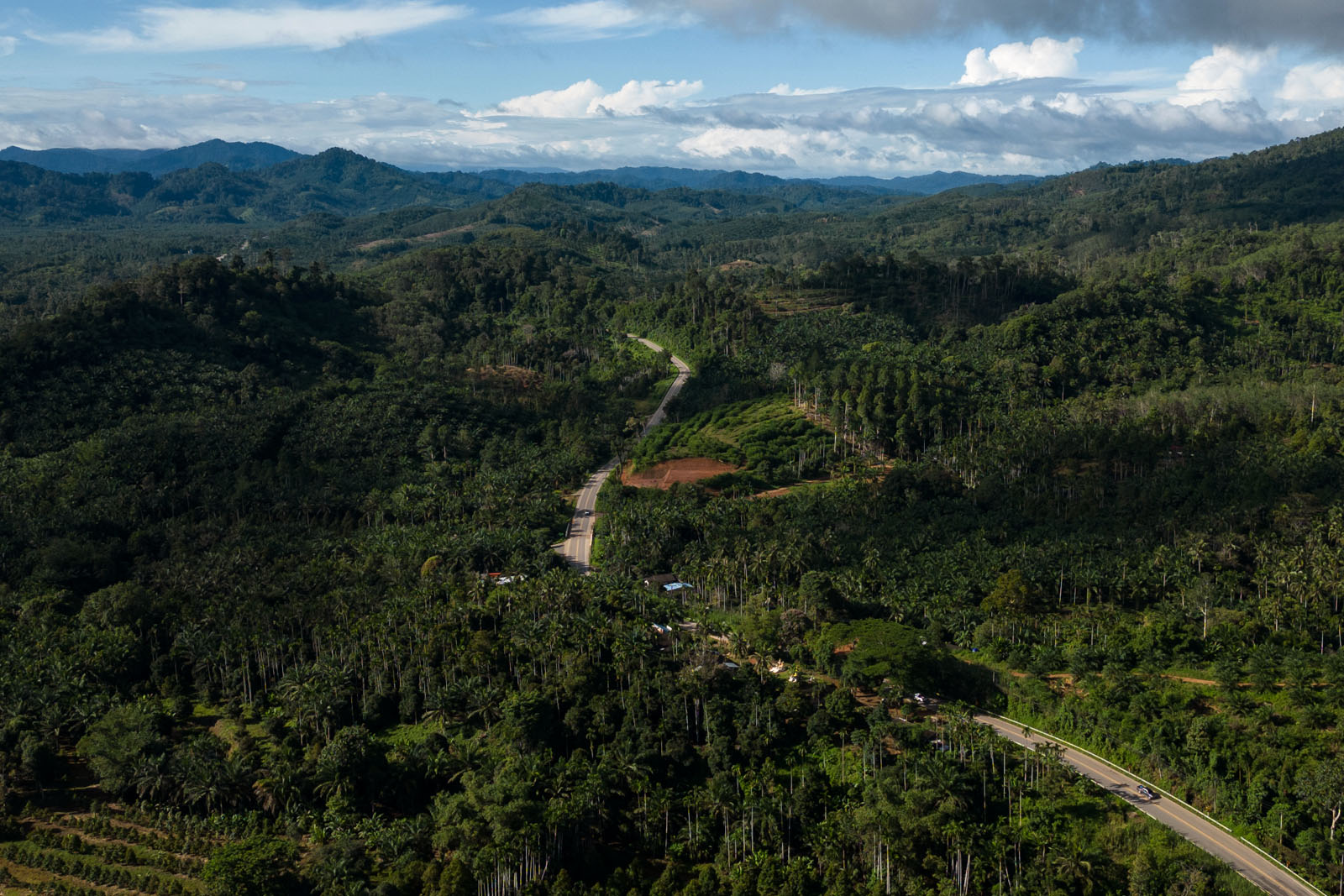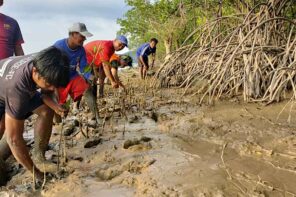The Thai government is betting big on a land bridge to revolutionise trade routes and propel the economy forward. But in the fishing villages and durian orchards of the South, the question remains: at what cost?
Rising out of lush undergrowth like a modern ruin, an unfinished high-rise hotel greets visitors to Ranong, a small coastal town in southern Thailand. This abandoned structure, a failed attempt at development, looms over the statue of a Chinese miner who founded the town.
Locals trace the hotel’s demise to the closure of the owner’s casino on a nearby island across the border in Myanmar in 2012, which left him bankrupt. This episode is just one chapter in Ranong’s struggle to find its economic footing.
Ranong was once a thriving tin mining town, but its primary industry collapsed in the 1980s due to global shifts to new materials. As the mines disappeared, Ranong tried to capitalise on its vast mangrove forests, a potential UNESCO World Heritage candidate. But it struggled to compete with neighbouring provinces for tourists. The town’s fishing industry has also suffered since Thailand tightened regulations in response to EU sanctions in 2015.
But Ranong’s fortunes may change soon, as it has been selected as the key gateway for Thailand’s land bridge project. This plan aims to build deep-sea ports on the Andaman Sea and Gulf of Thailand, connected by an 87-kilometre highway and railway, to bypass the Malacca Strait.
But investment comes at a cost. The 1-trillion baht project (29 billion USD) has raised many questions for the people of Ranong and others. When trade arrives, what will be the trade-off?
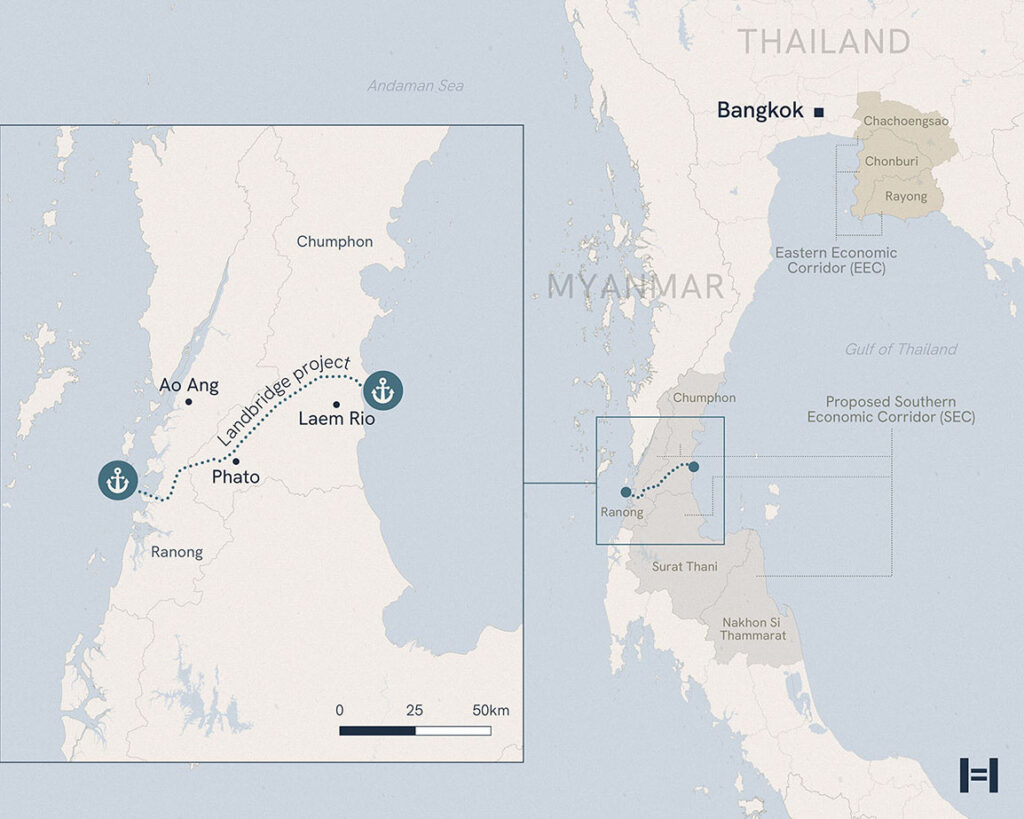
A cloned Suez Canal: Reviving an old plan
The idea of bypassing the congested Strait of Malacca has been debated since the 17th century, when a canal mirroring Egypt’s Suez was first proposed. But prohibitive costs and fears of splitting the nation in two put the plan on hold. A century later, the canal concept evolved into a land bridge: an 87-kilometre motorway and railway linking the Andaman Sea and Gulf of Thailand.
After several false starts, the land bridge now seems poised to become reality. In 2018, the Thai government resurrected the project as the centrepiece of a new special economic zone, the Southern Economic Corridor (SEC), that aims to propel Thailand to high-income status by 2030. With a projected capacity rivalling Hong Kong’s busiest port, the land bridge could slice up to four days off shipping times from China to South Asia and beyond.
The SEC is envisioned as a hub for high-value agriculture, including palm oil, fisheries and halal foods. The mega-project promises a 1.5 percent bump to Thailand’s GDP and thousands of new jobs for the region. But in Ranong – a sleepy town that would be transformed by the development – opinions are sharply divided over the costs and benefits.
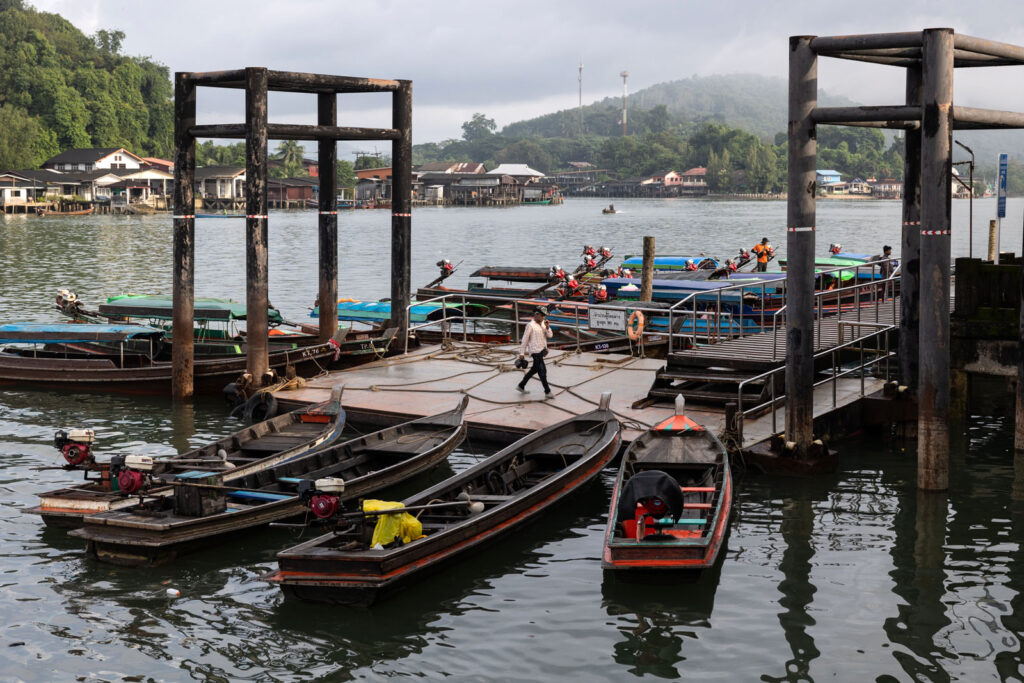
For fishers, a way of life under threat
For Thom Sinsuwan, a Muslim fisherwoman in her sixties, the land bridge is a non-starter. In early 2024, she made a personal appeal to then-Prime Minister Srettha Thavisin during his visit to the area, pleading the case for her community.
At the heart of her concern is Ao Ang Bay, a crystalline expanse of water that is slated to be partially filled in to create a 6,975 rai (1,116-hectare) deep-sea port. The bay is a lifeline for Thom and hundreds of other artisanal fishers who make their living trapping horse crabs and netting sand whiting daily.
“Most stateless folks live on fishing. If we cannot go out to the sea, it is like killing us alive,” Thom said.
Ranong is home to more than 5,000 stateless people who, despite strong cultural ties to Thailand, have been denied citizenship due to their birth in the borderlands between Thailand and Myanmar. Barred from traveling outside the province or seeking legal employment, they are among the most vulnerable communities in the path of the land bridge.
During public hearings in 2024, project developers assured Thom and her fellow fishers that they would not be cut off from the bay. But these promises give them little comfort.
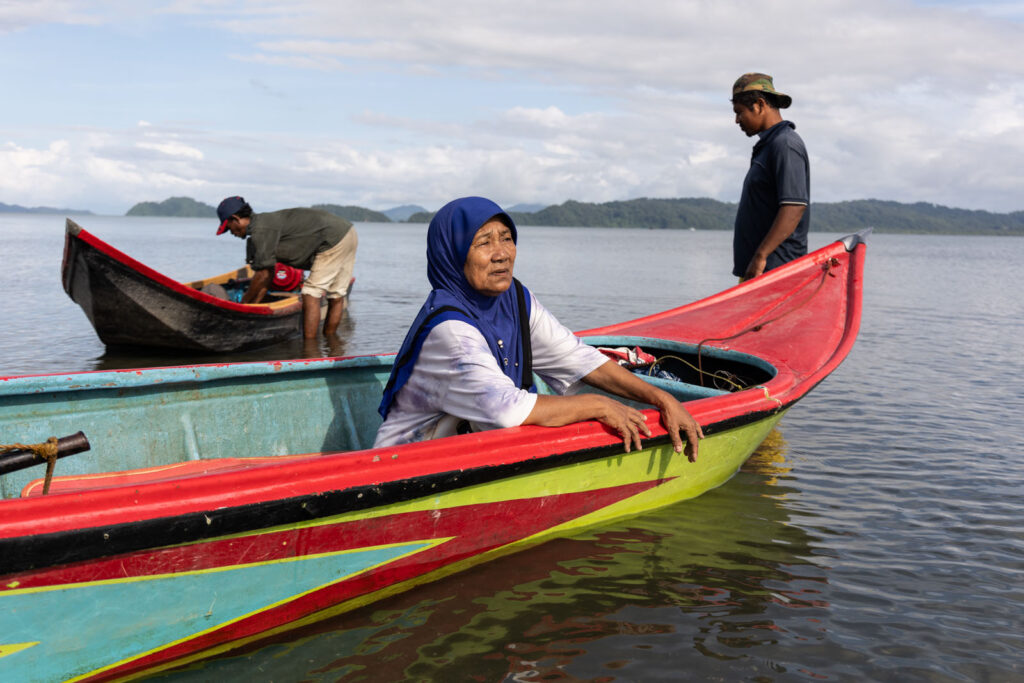
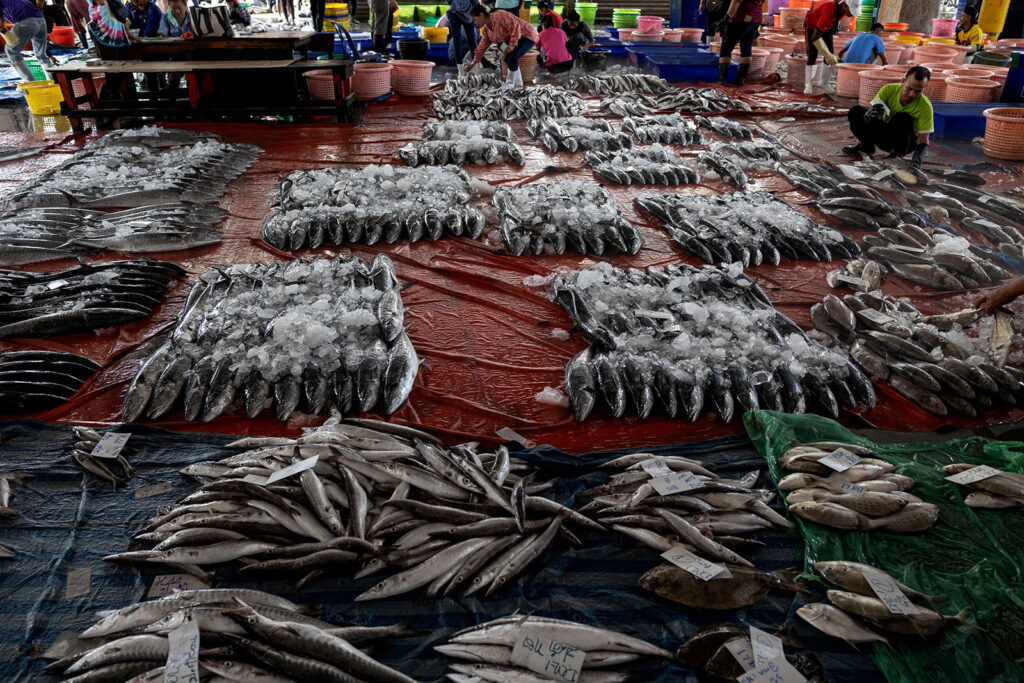
Commercial fishers in Ranong share fear that the land bridge construction could disrupt their usual routes along the coast to Phang Nga province.
“The shipping lanes could overlap our fishing grounds and there would be huge traffic,” said Somsap Jittathom, president of the Ranong Commercial Fisher Association. “The construction will also alter the sediment in the bay and disrupt the ecosystems.”
All fishers interviewed for this story worry that the massive project could irreparably alter the delicate marine ecosystem. For older fishers like Thom, changing professions is simply not an option.
“We want our country to develop, but can there be other kinds of development?” Thom asked.
But for some business leaders, the land bridge represents a desperately needed lifeline for Ranong’s floundering economy. Pornsak Kaewtaworn, a construction business owner who chairs the Ranong Chamber of Commerce, believes the project has widespread local support and could stem the tide of youth leaving for opportunities elsewhere.
“Our strength is to be a port town,” Pornsak said. “We [can] scale up from just Myanmar-Thailand border trade to the international levels and make use of the industry that will add value to the rich resources we already have. If we don’t do anything, Ranong will remain quiet as today.”
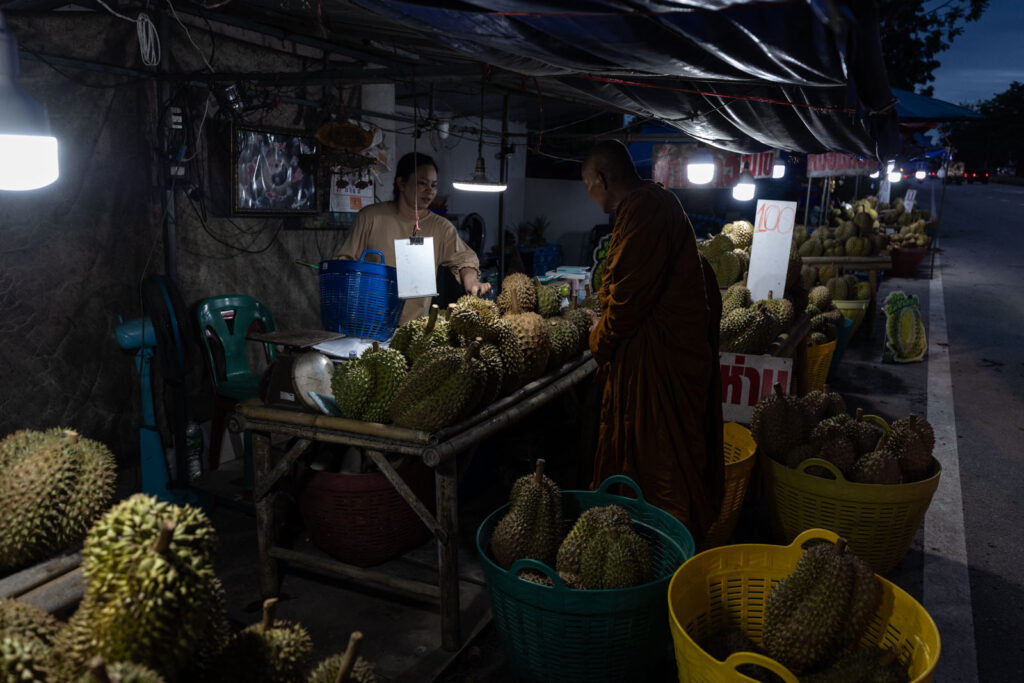
Durian farmers fear uprooting
Reaching the opposite coast from Ranong requires navigating a winding road through Pato district. Beneath the verdant canopy lies a prized commodity: durian, the spiky tropical fruit often called the “king of fruits.” For farmers here, their durian trees are as precious as gold. A single mature tree, aged over 20 years, can yield 50,000 baht ($1,400 USD) annually.
“You make plenty of money from farming here, enough to support yourself and your family,” said Somchok Jungjaturan, 43, whose brother’s house and durian orchard lie in the path of the proposed six-lane motorway that will link the land bridge’s deep-sea ports.
Project developers have pledged compensation for affected durian farmers, but many, like Somchok, say no amount can replace their priceless “green gold.”
“We don’t want an industrial estate on our land, especially the kind that invites foreign investors to exploit our natural resources,” Somchok said.
The spectre of foreign competition
For Somchok, the specter of “neo-colonialism” looms large. His hometown of Chumphon, the region’s durian hub, has already seen an influx of Chinese investors who buy up the fruit at local warehouses during the July-September harvest season for export.
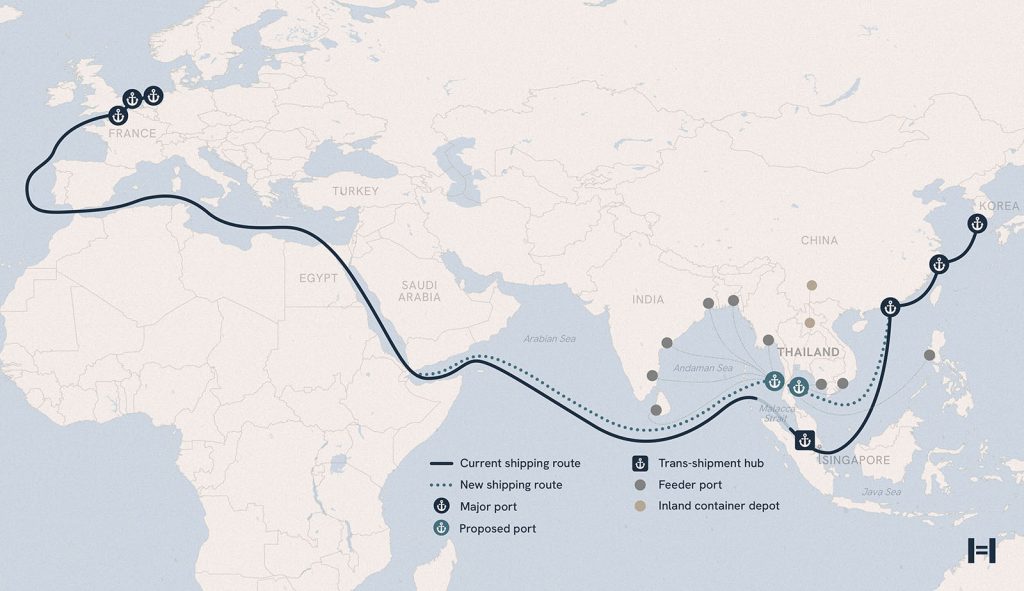
The land bridge’s accompanying Southern Economic Corridor, a special economic zone offering legal exemptions for foreign ownership and possible 99-year concessions, has only heightened these fears. The Thai government has courted investors from China, Japan, Germany, and beyond to help finance the 1-trillion-baht project.
Somchok has joined forces with Ranong’s fishers to rally opposition, petitioning embassies in Bangkok over the potential negative impacts. But they face an uphill battle against the scheme’s scale and opacity.
“The land bridge is not just about ports and motorways, but a conduit for thousands of hectares of industrial expansion,” said Buntita Yangdee, director of Center for Ecological Awareness Building, a local watchdog group. “The government has provided scant and piecemeal information, leaving communities to see just a fraction of the big picture. Actually this project is gigantic.”
HaRDstories contacted the Office of Transport and Traffic Policy and Planning, the agency overseeing the land bridge, in November, but the request for comment was declined, with officials citing the project’s status as a “national scheme” beyond their purview.
While Ranong and Chumphon will host the logistics infrastructure, the SEC will include two other Gulf of Thailand provinces, Surat Thani and Nakhon Si Thammarat. The enabling legislation also permits future expansion to “include other areas in the southern region,” raising the stakes for a wide swath of the Thai south.
Petroleum and promises of sustainability
Buntita and her team at the Center for Ecological Awareness Building are working to help communities in Ranong and Chumphon grasp the full scale of the land bridge’s potential impact. They are piecing together fragments of information reluctantly released by the government about the Southern Economic Corridor.
In their experience, the Environmental and Health Impact Assessments (EHIA) and public hearings required for each component project have been conducted in a piecemeal fashion. The EHIAs for the two deep-sea ports concluded that a majority of residents living within a 5-kilometre radius supported the project. But Buntita believes these assessments vastly underestimate the true reach of the impacts.
Most troubling to the communities is what they see as the most glaring omission from the public discourse: petrochemicals. While official documents tout cargo shipping and bio-based industries, little mention has been made of the land bridge’s role in the petroleum industry.
According to one official handout, the scheme includes plans for a crude oil pipeline along the motorway near Pato, positioning Thailand as a transit hub for Middle Eastern oil and gas en route to primary consumers in China and Japan.
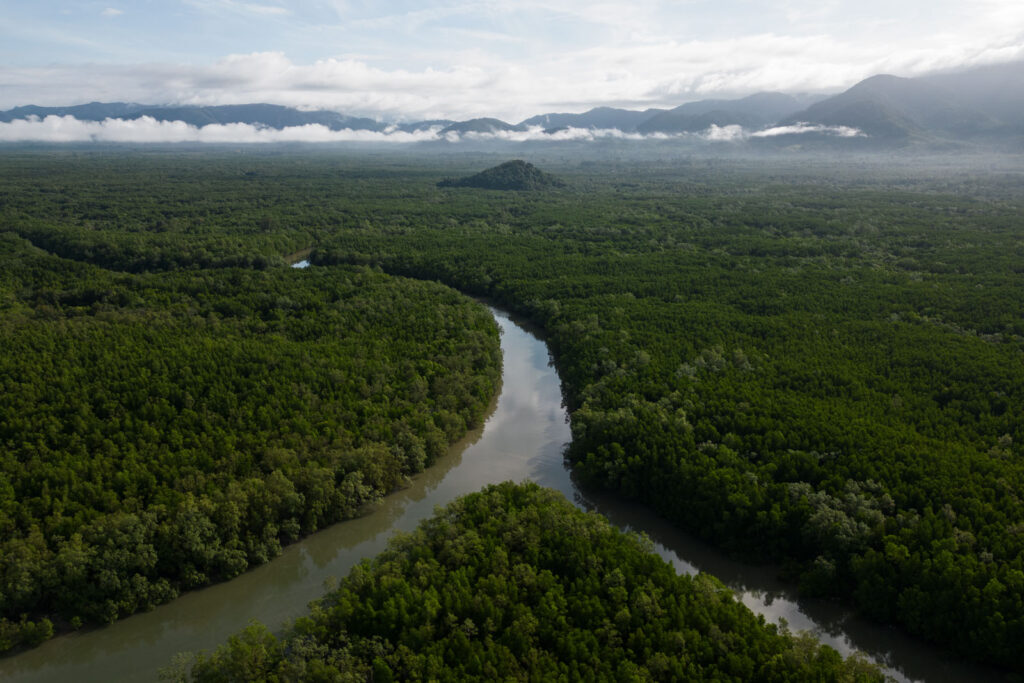
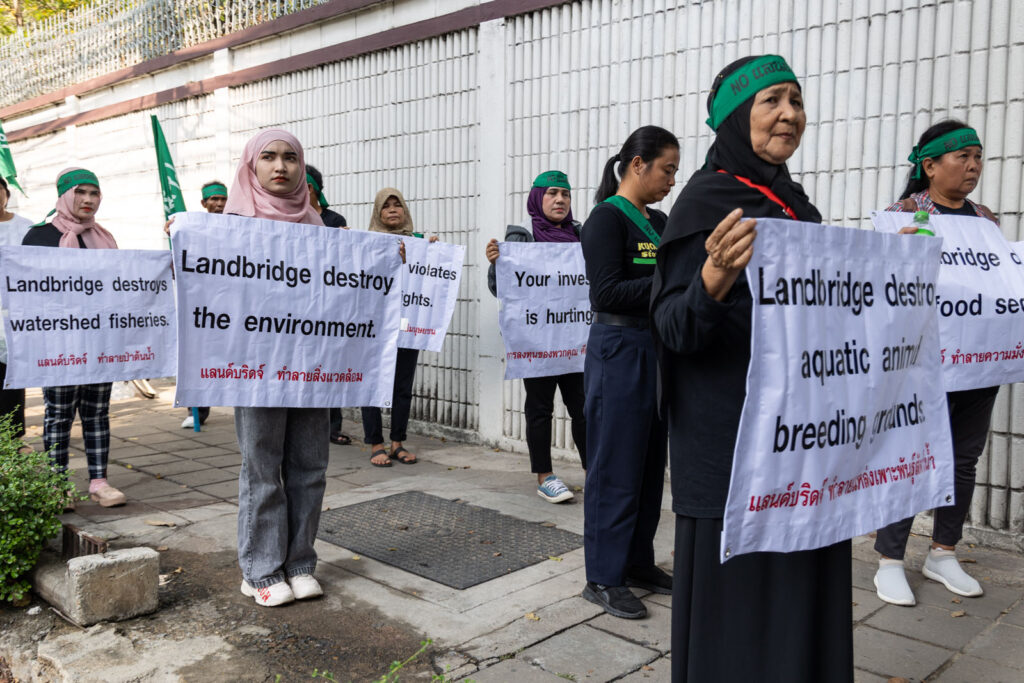
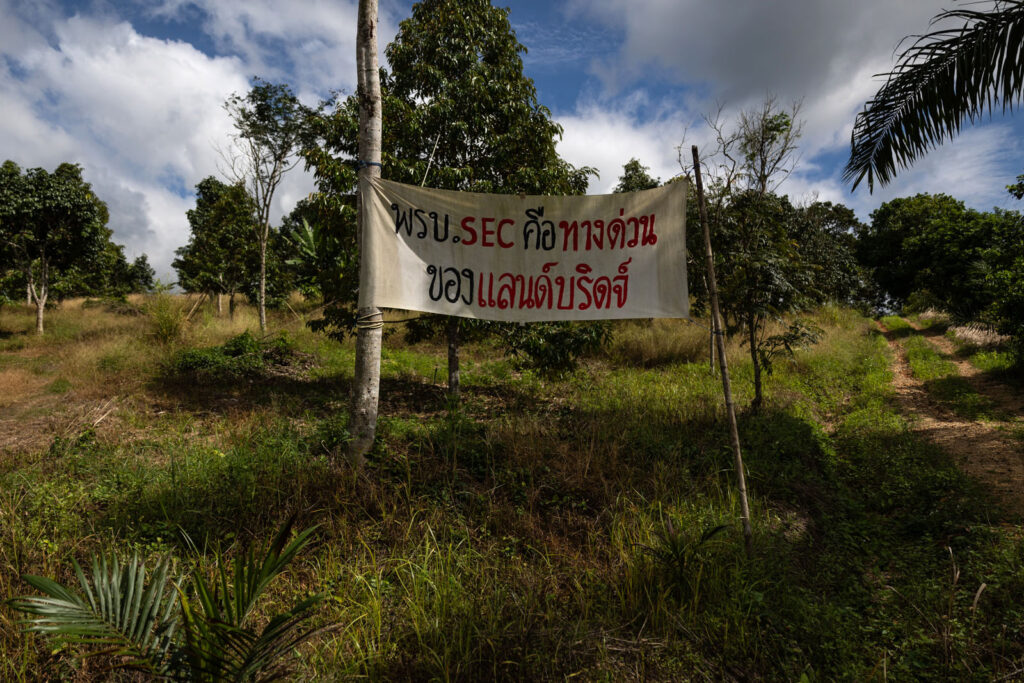
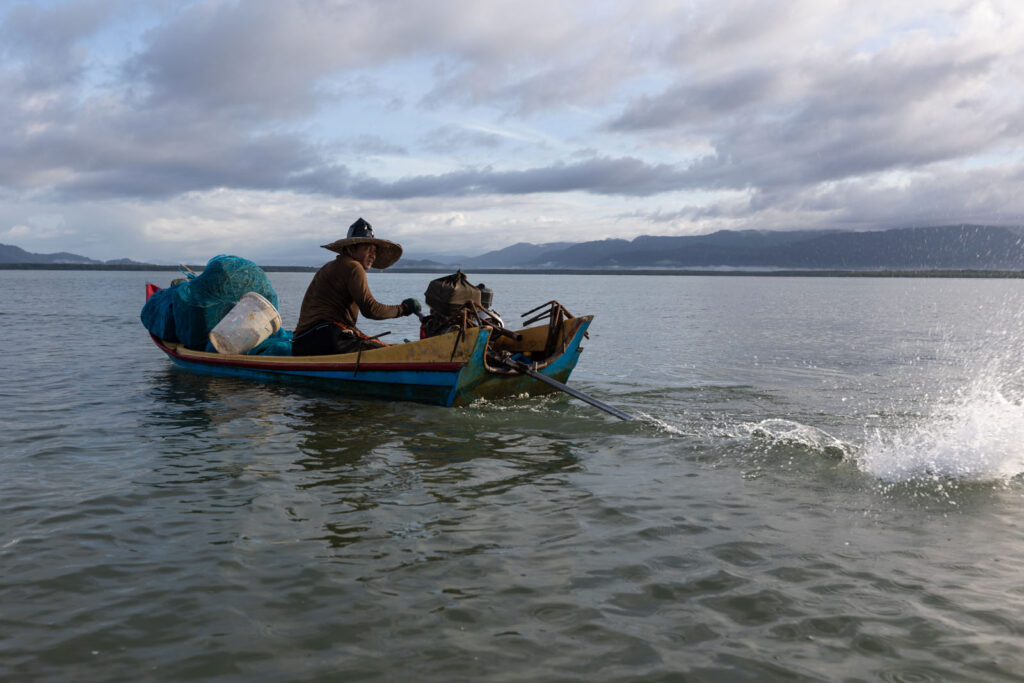
A Chumphon provincial official, quoted in a parliamentary committee study, touted the pipeline’s potential to generate 18 million baht ($520,000 USD) in daily revenue for Thailand, while also “cutting costs and environmental impacts for shippers struggling to meet new carbon credit requirements.”
As global pressure mounts to decarbonise, businesses are indeed seeking ways to offset their emissions. Thailand has seized upon this, offering investors carbon credits through mangrove conservation schemes, including in areas affected by the land bridge. But critics like Buntita dismiss these initiatives as “greenwashing.”
Project developers have assured communities that no oil refineries will be built, as with the Eastern Economic Corridor (EEC) project, in an attempt to allay pollution fears.
For Buntita and other environmental advocates, the land bridge represents a crossroads for Thailand’s development direction, with the specter of conventional heavy industry threatening more sustainable paths like renewable energy and high-value agriculture, which could build upon local livelihoods like Thom’s fishing and Somchok’s durian farming.
With impact assessments for the land bridge slated for 2025, in tandem with the expected passage of the SEC enabling legislation, the Thai government hopes to break ground on the ports and motorways the following year, aiming for completion by 2030.
“There are several directions our country can take,” said Buntita “But the government seems intent on doubling down on polluting conventional industry for decades to come. These interests still hold a lot of sway over our leaders today.”
Edited by Fabian Drahmoune
The Pulitzer Center contributed to the resources for this story.
The story was first published in English and Thai on HaRDstories and Burmese in Dawei Watch It is also republished in the Thai version on Sarakadee Magazine.

